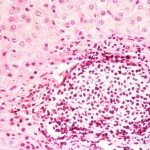Link to Pubmed [PMID] – 12414922
J. Virol. 2002 Dec;76(23):11801-8
Previous studies have identified two different strains of cottontail rabbit papillomavirus (CRPV) that differ by approximately 5% in base pair sequence and that perform quite differently when used to challenge New Zealand White (NZW) rabbit skin. One strain caused persistent lesions (progressor strain), and the other induced papillomas that spontaneously regressed (regressor strain) at high frequencies (J. Salmon, M. Nonnenmacher, S. Caze, P. Flamant, O. Croissant, G. Orth, and F. Breitburd, J. Virol. 74:10766-10777, 2000; J. Salmon, N. Ramoz, P. Cassonnet, G. Orth, and F. Breitburd, Virology 235:228-234, 1997). We generated a panel of CRPV genomes that contained chimeric and mutant progressor and regressor strain E6 genes and assessed the outcome upon infection of both outbred and EIII/JC inbred NZW rabbits. The carboxy-terminal 77-amino-acid region of the regressor CRPV strain E6, which contained 15 amino acid residues that are different from those of the equivalent region of the persistent CRPV strain E6, played a dominant role in the conversion of the persistent CRPV strain to one showing high rates of spontaneous regressions. In addition, a single amino acid change (G252E) in the E6 protein of the CRPV progressor strain led to high frequencies of spontaneous regressions in inbred rabbits. These observations imply that small changes in the amino acid sequences of papillomavirus proteins can dramatically impact the outcome of natural host immune responses to these viral infections. The data imply that intrastrain differences between separate isolates of a single papillomavirus type (such as human papillomavirus type 16) may contribute to a collective variability in host immune responses in outbred human populations.

